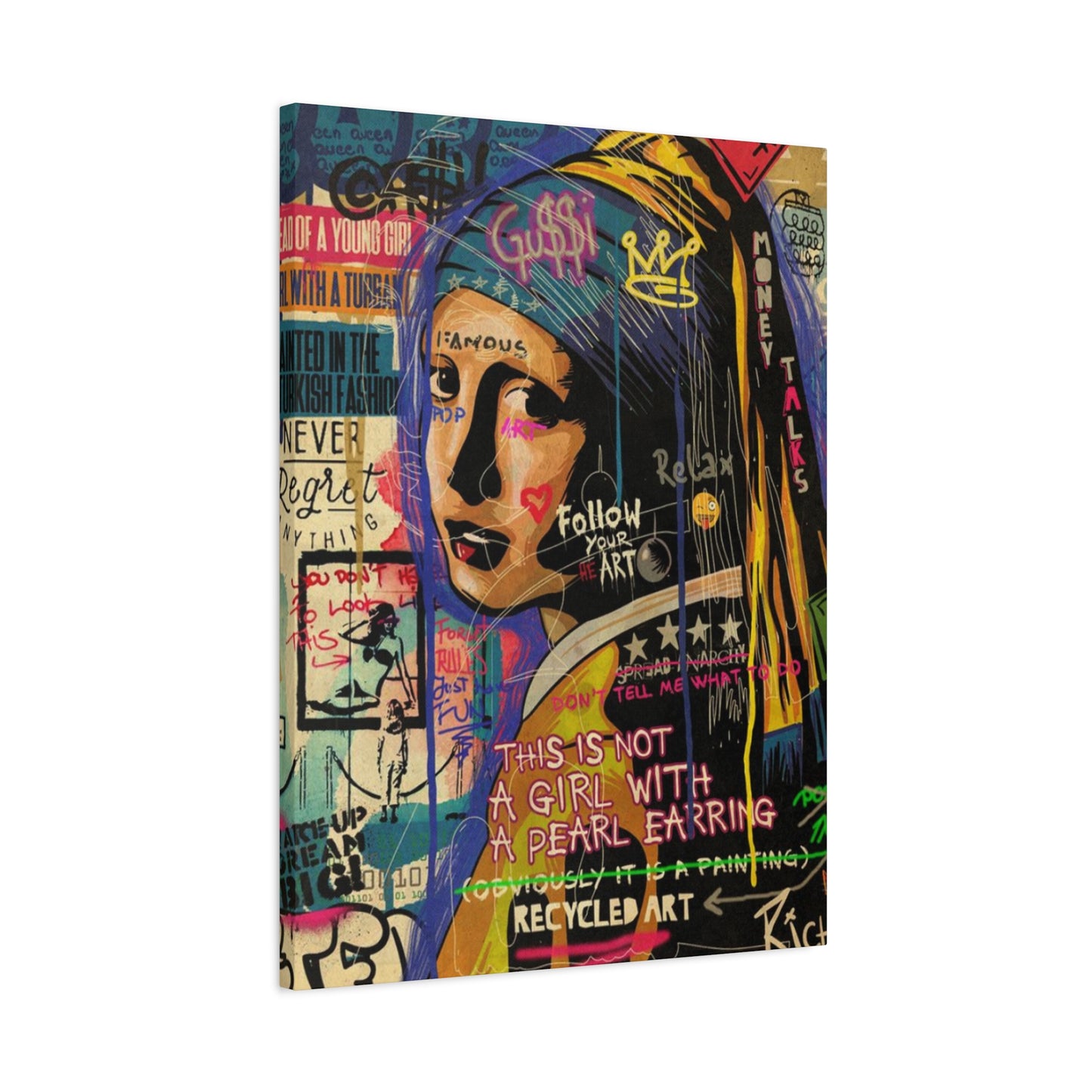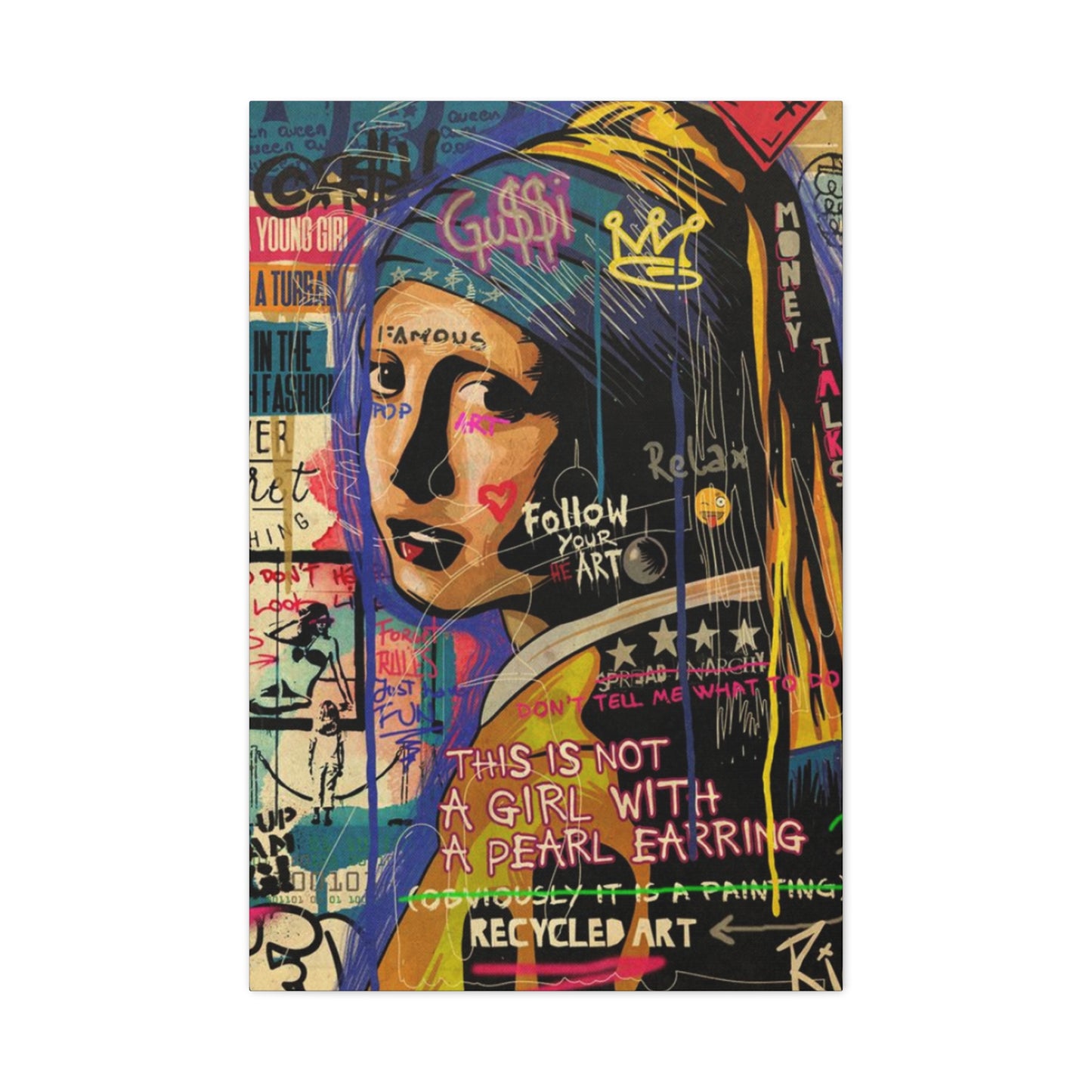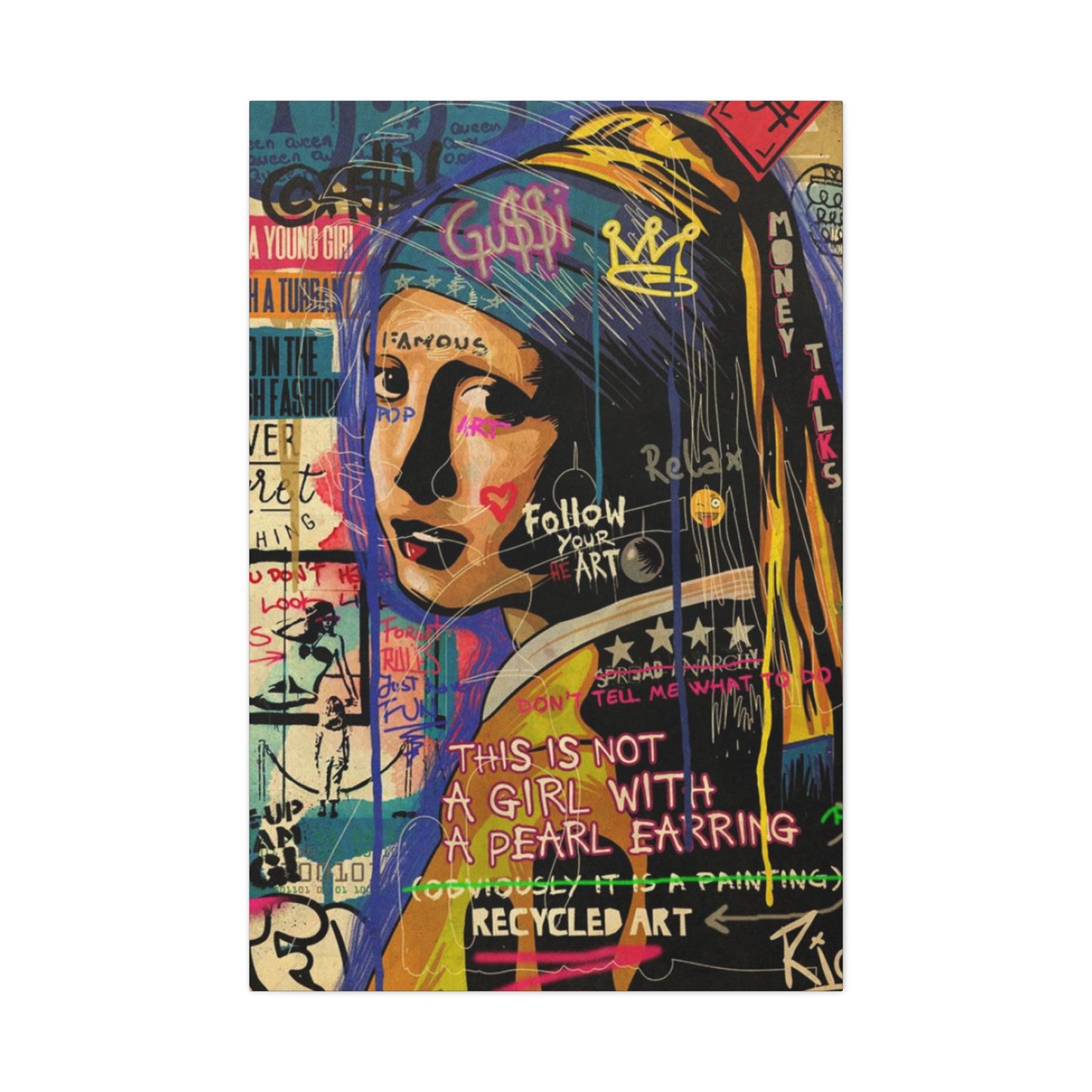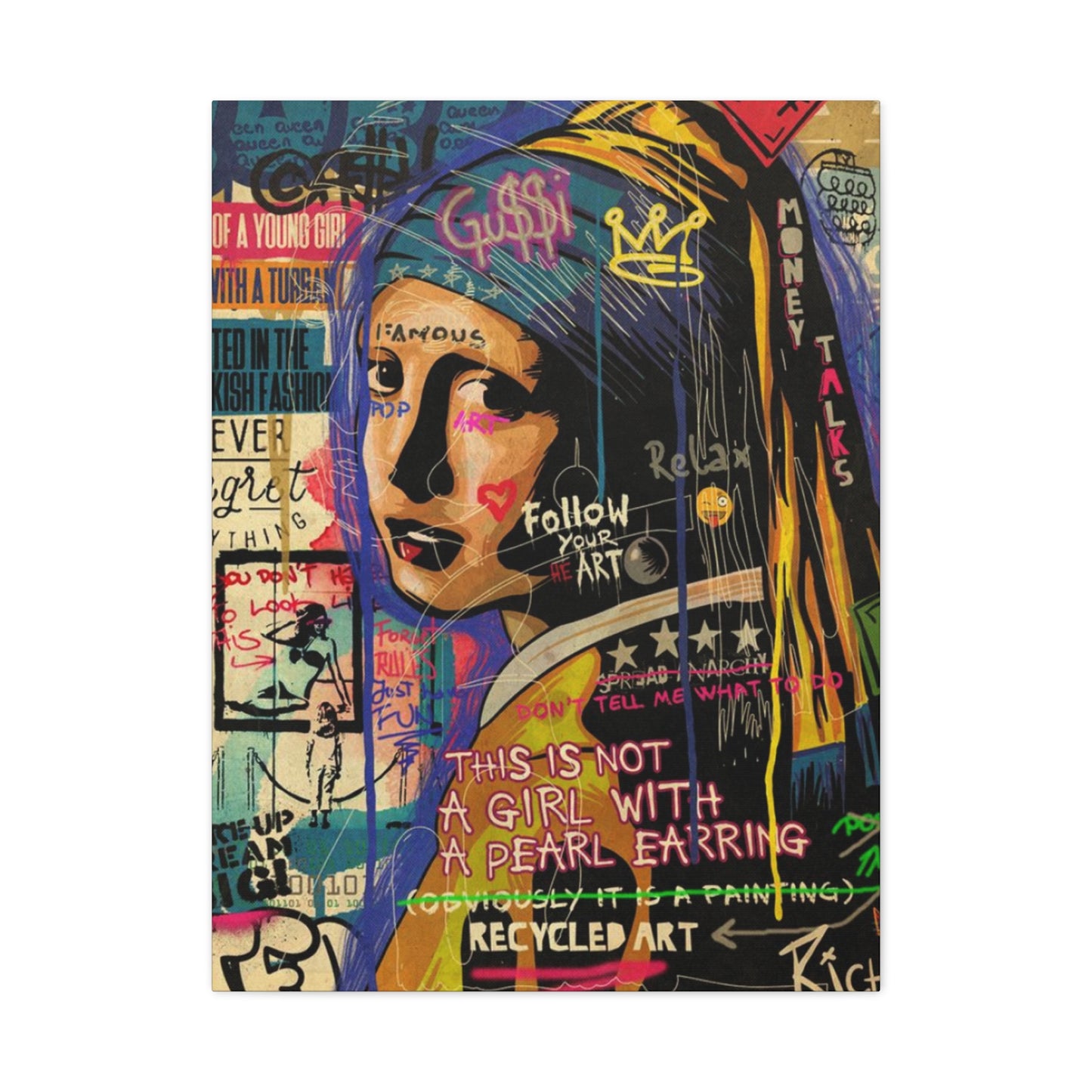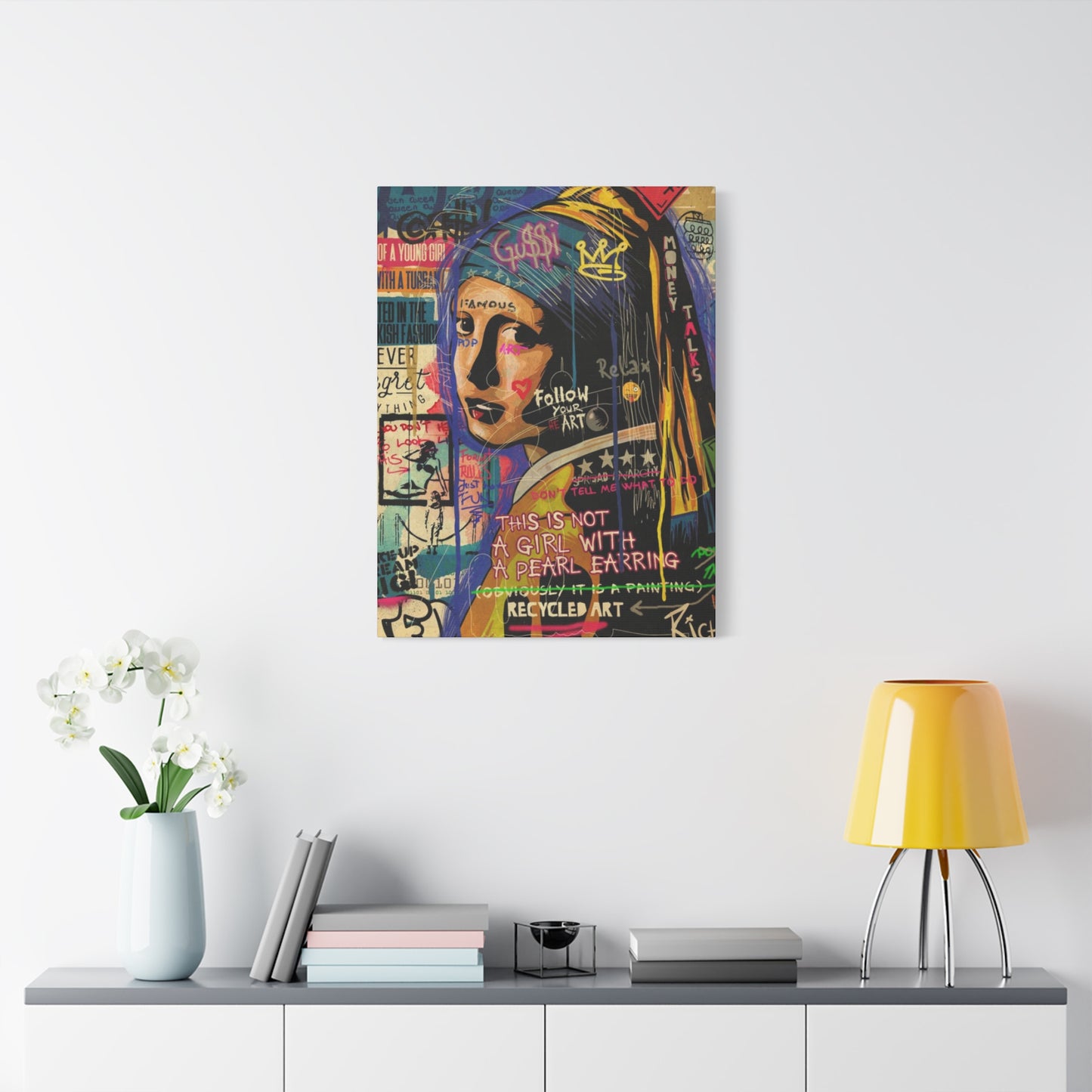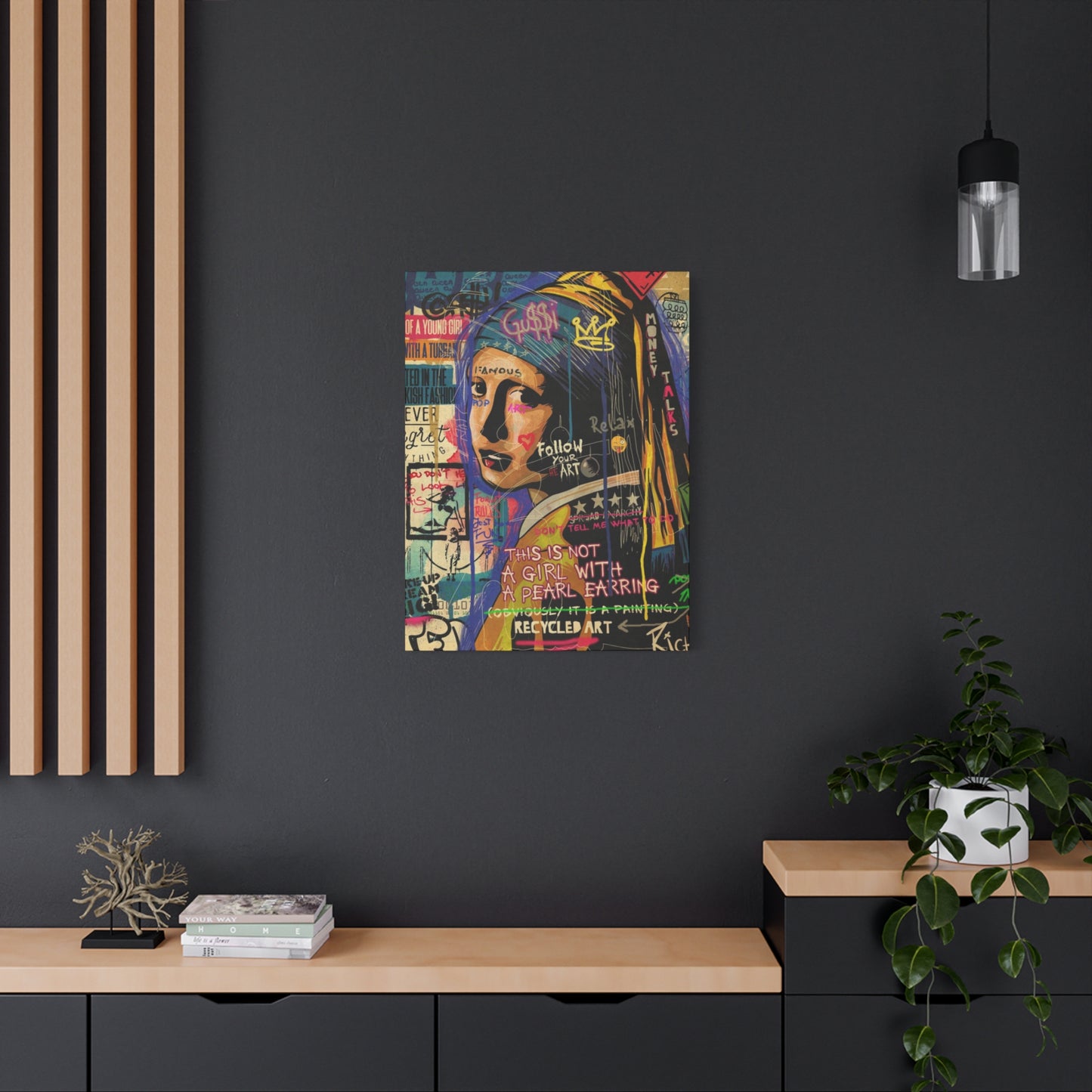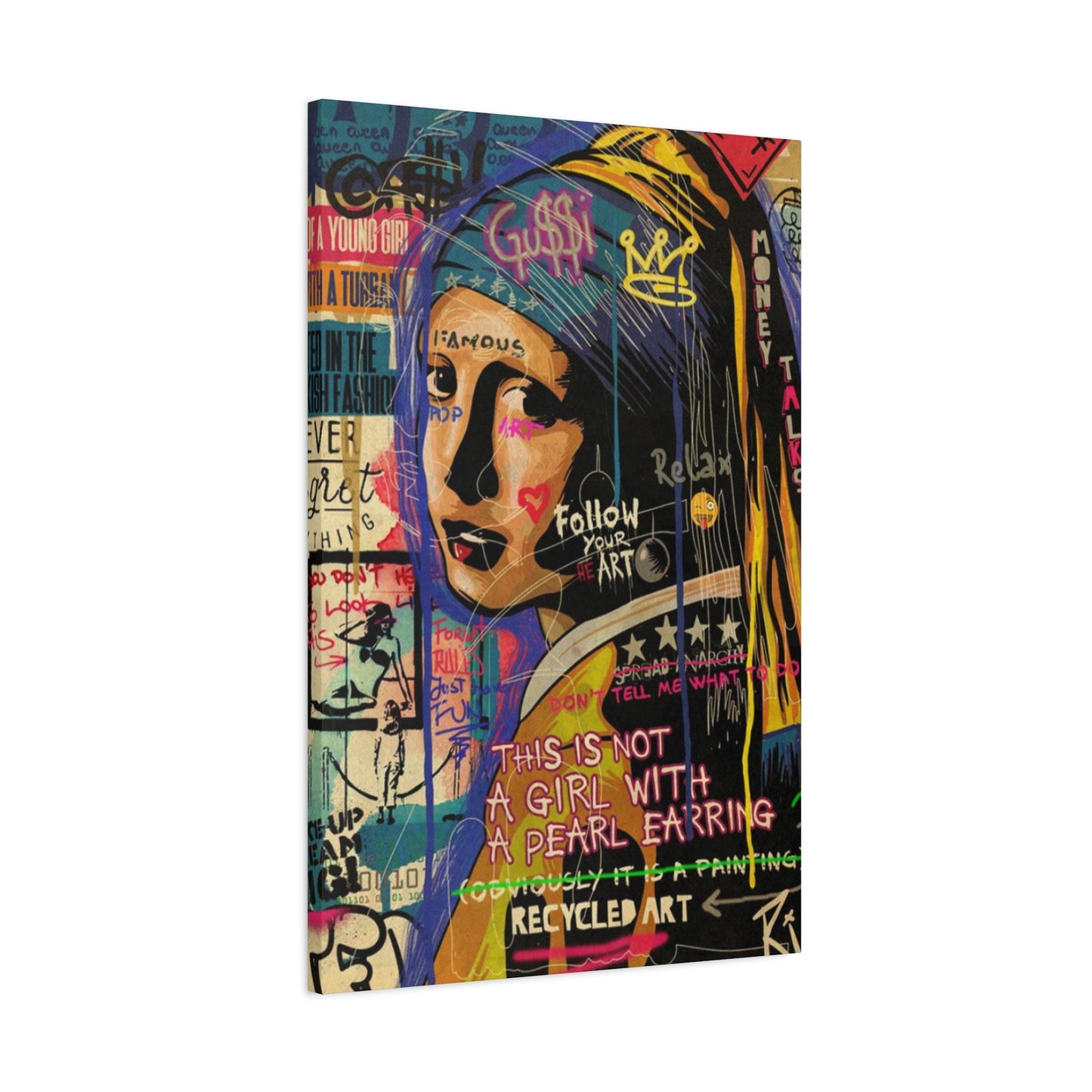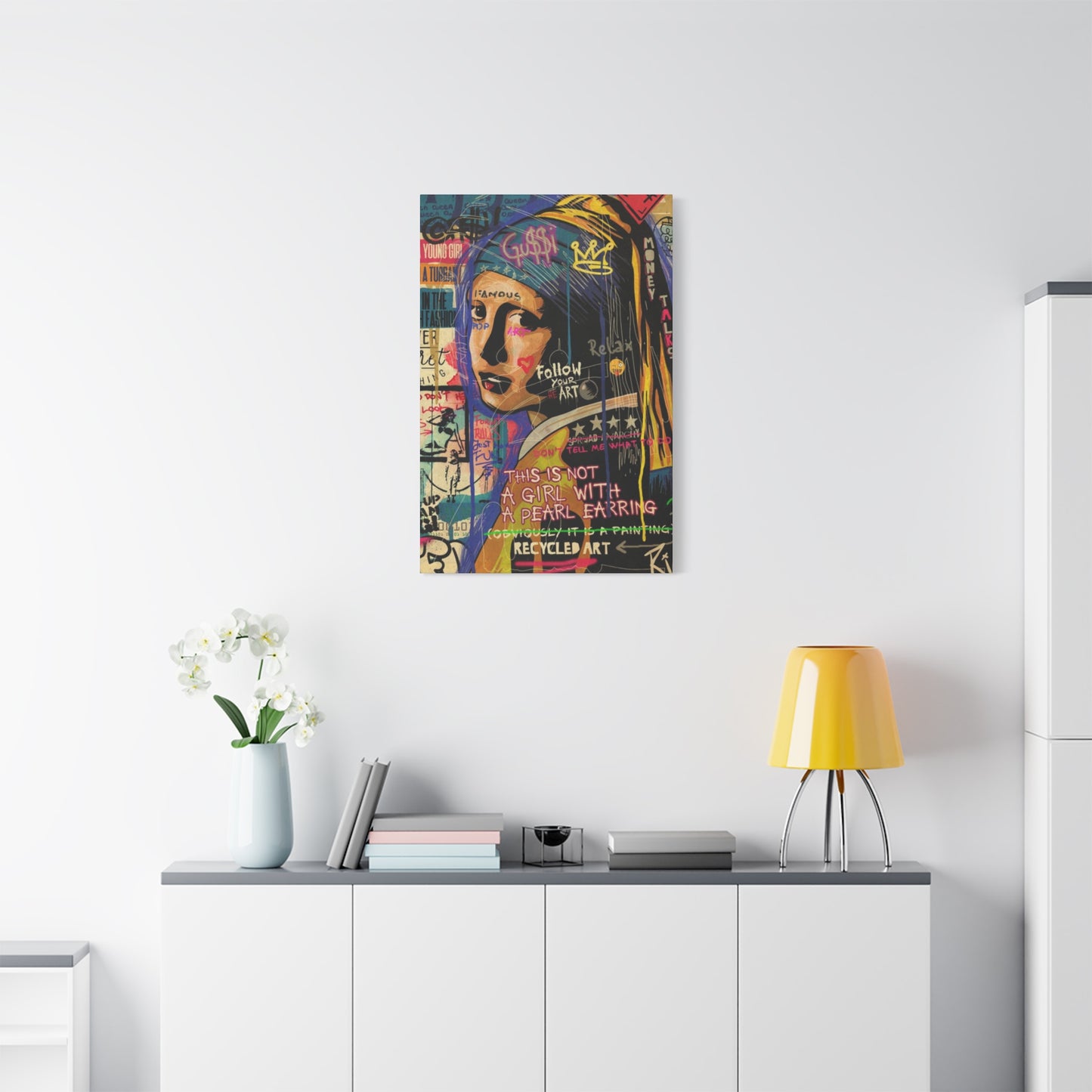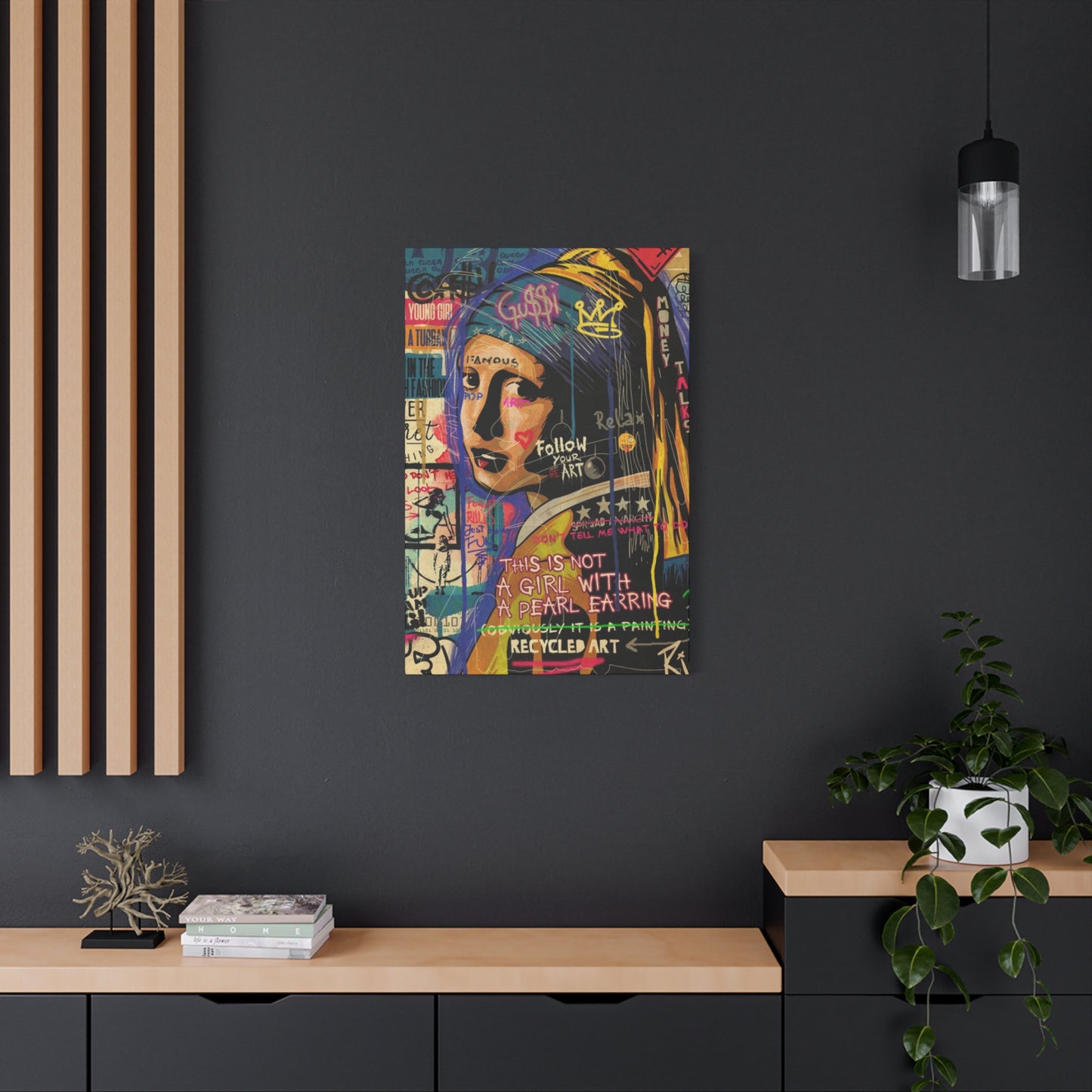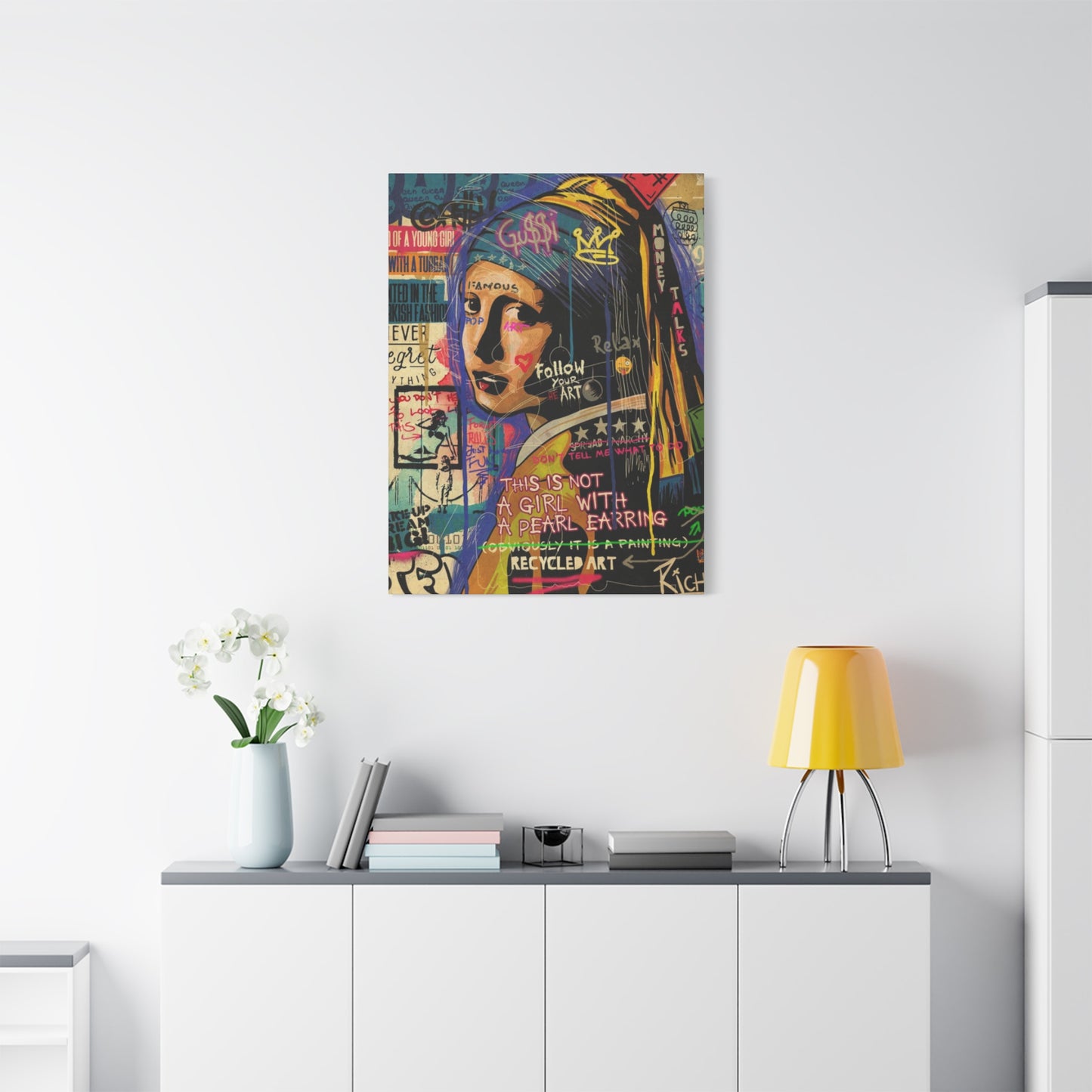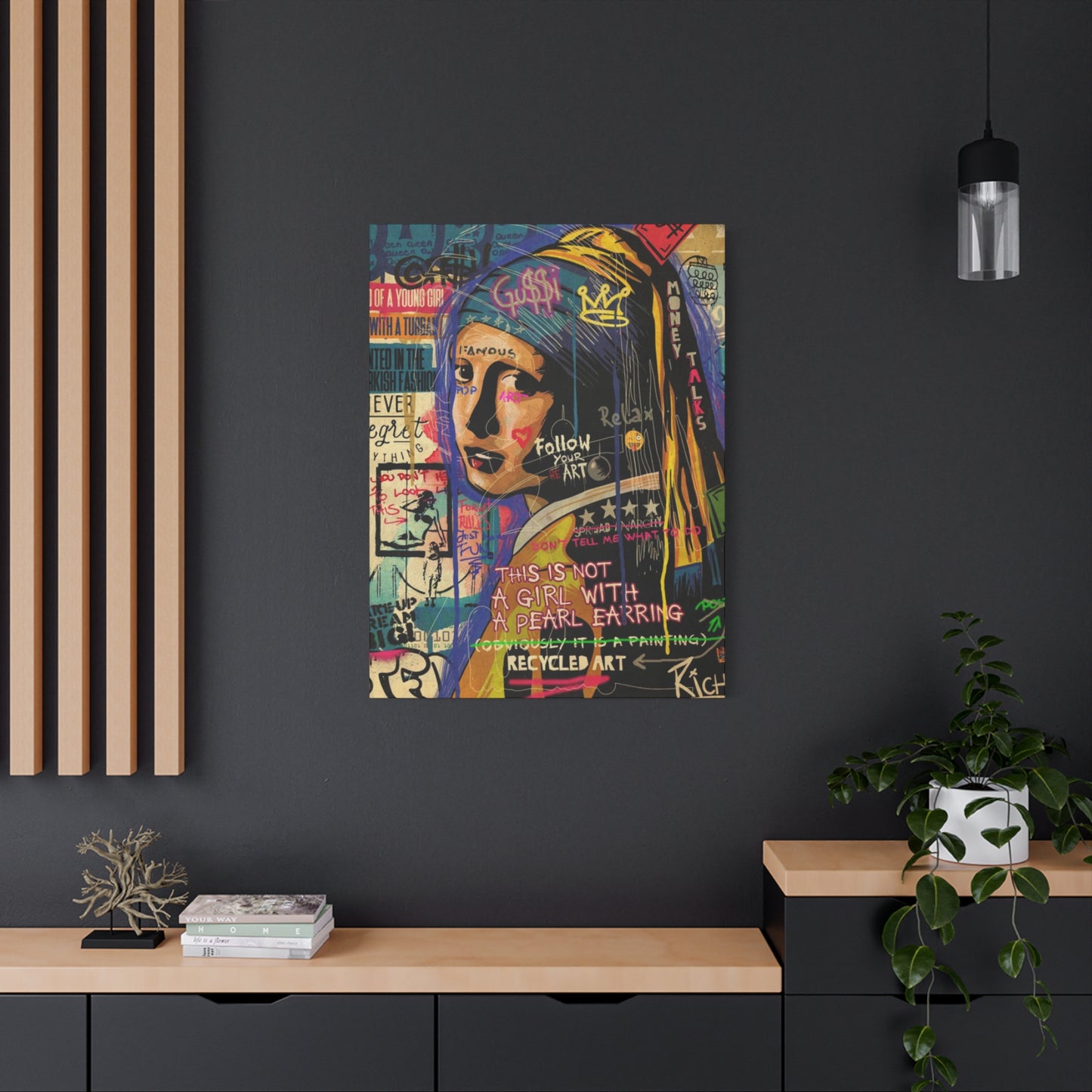Feminine Expression in Focus: Girl Candid Abstract Mixed Media Wall Art
Abstract painting has revolutionized the way we perceive and appreciate artistic expression in contemporary homes and commercial establishments. Mixed media wall art canvas prints represent a fascinating convergence of traditional artistic techniques with modern printing technology, creating stunning visual experiences that captivate viewers and transform ordinary environments into extraordinary galleries.
The world of candid abstract painting encompasses a vast spectrum of creative possibilities, from bold geometric compositions to fluid organic forms that seem to dance across the canvas. These artistic creations serve as powerful focal points, capable of establishing mood, defining style, and expressing personality through carefully orchestrated combinations of color, texture, and form.
Canvas prints have democratized art appreciation by making high-quality reproductions of original abstract paintings accessible to a broader audience. The printing technology used in creating these wall art pieces has evolved dramatically, now capable of capturing the subtle nuances of brushstrokes, the depth of mixed media applications, and the vibrant intensity of colors that characterize exceptional abstract works.
Exploring the Artistic Foundation of Abstract Expression
Abstract painting emerged as a revolutionary art movement in the early 20th century, fundamentally challenging traditional representational art forms. Artists began to explore pure visual elements – color, line, shape, and texture – as means of expression rather than tools for depicting recognizable subjects. This shift toward abstraction opened infinite possibilities for creative expression and emotional communication through purely visual language.
The evolution of abstract art can be traced through various movements and schools of thought, each contributing unique perspectives and techniques to the overall development of non-representational art. From the geometric abstractions of Wassily Kandinsky to the emotional expressiveness of Jackson Pollock's action paintings, abstract art has continuously evolved to reflect changing cultural values and artistic philosophies.
Mixed media approaches in abstract painting add layers of complexity and visual interest to artistic compositions. Artists combine traditional painting mediums with unconventional materials such as fabric, paper, metal, sand, and found objects to create textured surfaces that engage viewers on multiple sensory levels. These innovative techniques result in artworks that possess remarkable depth and dimensional qualities that cannot be achieved through paint alone.
The candid nature of abstract painting refers to the spontaneous, unguarded quality that characterizes the most compelling works in this genre. Artists working in this style often embrace intuitive processes, allowing emotions and subconscious impulses to guide their creative decisions rather than adhering to predetermined compositions or color schemes. This approach results in artworks that possess an authentic, immediate quality that resonates powerfully with viewers.
Understanding Canvas Print Technology and Quality
Modern canvas printing technology has reached sophisticated levels of accuracy and durability, enabling the reproduction of abstract paintings with remarkable fidelity to original artworks. High-resolution digital printing processes capture minute details, subtle color gradations, and textural elements that were previously impossible to reproduce effectively through traditional printing methods.
The quality of canvas prints depends on several critical factors, including the resolution of source images, the calibration of printing equipment, and the quality of materials used in the production process. Professional-grade canvas prints utilize archival inks that resist fading and maintain color stability for decades when properly displayed and maintained.
Giclee printing represents the gold standard in fine art reproduction, employing microscopic ink droplets to create smooth color transitions and precise detail rendering. This printing method produces gallery-quality reproductions that closely approximate the visual impact of original paintings while providing the practical benefits of affordability and availability.
Canvas material selection significantly impacts the final appearance and longevity of printed artworks. High-quality cotton canvases provide excellent ink absorption and dimensional stability, while synthetic alternatives offer enhanced durability and moisture resistance. The texture and weight of canvas materials influence how printed images appear, with finer weaves producing smoother surfaces and coarser textures creating more pronounced artistic effects.
Stretching and mounting processes require careful attention to maintain proper tension and prevent distortion of printed images. Professional mounting techniques ensure that canvas prints maintain their intended appearance over time while providing adequate support for long-term display. Gallery-wrap methods, where the image extends around the edges of the stretcher frame, create a contemporary presentation style that eliminates the need for additional framing.
Color Theory and Its Application in Abstract Wall Art
Color serves as the primary vehicle for emotional expression and visual impact in abstract painting. Artists working in this genre must possess sophisticated understanding of color relationships, psychological effects, and harmonic principles to create compositions that effectively communicate intended messages and evoke desired responses from viewers.
The color wheel provides a fundamental framework for understanding relationships between different hues and their potential combinations. Primary colors – red, blue, and yellow – form the foundation from which all other colors are derived through various mixing processes. Secondary and tertiary colors expand the available palette while creating opportunities for subtle gradations and complex color harmonies.
Warm colors, including reds, oranges, and yellows, tend to advance visually and create feelings of energy, excitement, and intimacy. These colors work particularly well in abstract compositions intended to create dynamic, engaging environments that stimulate conversation and activity. Cool colors, such as blues, greens, and purples, recede visually and promote feelings of calm, relaxation, and contemplation.
Color temperature plays a crucial role in establishing mood and atmosphere within abstract compositions. Artists skillfully manipulate warm and cool color relationships to create visual depth, establish focal points, and guide viewer attention through carefully orchestrated color progressions. The interplay between warm and cool colors can create dramatic tension or harmonious balance depending on the artist's intentions.
Saturation levels affect the intensity and emotional impact of colors within abstract compositions. Highly saturated colors create bold, attention-grabbing effects that work well as accent elements or focal points. Desaturated or muted colors provide subtle backgrounds and transitional areas that allow more vibrant elements to shine while maintaining overall compositional coherence.
Value relationships – the relative lightness and darkness of colors – establish contrast and visual hierarchy within abstract paintings. Strategic use of light and dark values creates depth, defines forms, and establishes rhythm and movement throughout compositions. Successful abstract paintings typically incorporate a full range of values to achieve maximum visual impact and dimensional quality.
Composition Principles in Abstract Mixed Media Art
Effective composition forms the structural foundation upon which successful abstract paintings are built. Unlike representational art, which relies on recognizable subjects to anchor viewer interest, abstract compositions must create compelling visual experiences through pure arrangement of artistic elements. This requires sophisticated understanding of design principles and their application to non-representational imagery.
The rule of thirds provides a valuable starting point for organizing abstract compositions, dividing the canvas into nine equal sections through horizontal and vertical lines. Placing important elements along these lines or at their intersections creates naturally pleasing arrangements that feel balanced and harmonious to viewers. However, abstract artists often deliberately violate traditional composition rules to create tension and visual excitement.
Balance in abstract composition can be achieved through symmetrical or asymmetrical arrangements of visual elements. Symmetrical balance creates formal, stable compositions that convey feelings of order and tranquility. Asymmetrical balance requires careful distribution of visual weight through strategic placement of colors, shapes, and textures to achieve equilibrium without perfect symmetry.
Visual movement guides viewer attention through abstract compositions, creating pathways that lead the eye from one area to another. Artists establish movement through strategic placement of lines, shapes, and color transitions that create implied directions and flow patterns. Effective movement prevents compositions from appearing static while maintaining overall unity and coherence.
Focal points in abstract art serve as visual anchors that provide starting points for viewer engagement. These areas of emphasis can be created through contrast in color, value, texture, or scale. Multiple focal points require careful orchestration to prevent visual confusion while maintaining compositional hierarchy and overall harmony.
Rhythm and repetition create musical qualities within abstract compositions, establishing patterns and variations that add visual interest and structural coherence. Repeated elements such as shapes, colors, or textures create underlying beats, while variations in size, spacing, or intensity add syncopation and complexity to overall rhythmic patterns.
Texture and Dimensional Effects in Mixed Media Works
Mixed media techniques enable artists to incorporate actual texture and dimensional elements into abstract paintings, creating tactile qualities that enhance visual interest and sensory engagement. These approaches move beyond traditional painting limitations to explore sculptural possibilities within two-dimensional formats.
Impasto techniques involve applying paint in thick layers that create raised surfaces with visible brushstrokes and tool marks. These textural applications catch and reflect light differently than smooth painted surfaces, adding dimensional qualities that change as viewing angles shift. Impasto work requires careful consideration of paint consistency and drying properties to achieve desired effects without cracking or other structural problems.
Collage elements introduce foreign materials into painted compositions, creating textural contrasts and unexpected visual juxtapositions. Paper, fabric, photographs, and other found materials can be integrated into paintings to add layers of meaning and visual complexity. Successful collage work requires careful attention to adhesion properties and long-term compatibility between different materials.
Sand, gel mediums, and modeling paste create textured surfaces that can be painted over or left exposed to contribute to overall compositional effects. These materials enable artists to build up areas of interest while creating opportunities for additional color applications and highlighting effects. The interaction between textured surfaces and overlaid colors creates complex visual phenomena that cannot be achieved through paint alone.
Stenciling and masking techniques allow artists to create crisp edges and defined shapes within otherwise fluid compositions. These methods provide control and precision within spontaneous painting processes, enabling the integration of geometric elements with organic forms. The contrast between sharp-edged and soft-edged elements adds visual tension and compositional interest.
Scratching, scraping, and other subtractive techniques remove paint layers to reveal underlying colors or canvas textures. These approaches add complexity and depth to painted surfaces while creating opportunities for happy accidents and unexpected discoveries. Subtractive techniques require careful timing and tool selection to achieve desired effects without damaging underlying layers.
Digital Art and Print Integration
The integration of digital art creation tools with traditional mixed media approaches has expanded creative possibilities for contemporary abstract artists. Digital manipulation and enhancement techniques can refine compositional elements, adjust color relationships, and create effects that would be difficult or impossible to achieve through purely traditional methods.
Digital painting software provides infinite undo capabilities and non-destructive editing options that allow artists to experiment freely without fear of ruining work in progress. Layers, blending modes, and filter effects offer sophisticated tools for creating complex visual relationships and atmospheric effects that complement traditional mixed media techniques.
Scanning and photographing original mixed media works for digital reproduction requires careful attention to color accuracy and resolution requirements. Professional color management ensures that printed reproductions maintain fidelity to original artworks while accounting for differences between additive light-based displays and subtractive pigment-based printing systems.
Hybrid workflows combining traditional and digital techniques allow artists to leverage the strengths of both approaches. Initial compositions may be created using traditional mixed media methods, then scanned and further refined digitally before final printing. This approach enables unlimited experimentation and refinement while maintaining the authentic character of hand-created elements.
Print sizing and scaling considerations affect how abstract compositions translate to different display formats. Elements that work well at small sizes may become overwhelming when enlarged, while fine details may disappear when reduced. Successful translation between different scales requires careful evaluation of compositional elements and their relative impact at various sizes.
Color space management ensures consistent color appearance across different devices and printing systems. Professional workflows utilize standardized color profiles and calibrated equipment to maintain color accuracy from initial creation through final printing and display. This attention to technical details ensures that printed wall art accurately represents artistic intentions.
Psychological Impact of Abstract Wall Art
Abstract wall art possesses unique capabilities to influence psychological states and emotional responses through direct visual communication that bypasses intellectual interpretation. Colors, forms, and compositional arrangements trigger subconscious reactions that can affect mood, energy levels, and overall well-being of viewers in profound ways.
Warm color palettes tend to create stimulating environments that encourage activity and social interaction. Red abstract compositions can increase energy levels and create feelings of excitement or passion, while orange elements promote warmth and friendliness. Yellow accents add cheerfulness and optimism to living and working environments.
Cool color schemes promote relaxation and contemplation, making them ideal for bedroom, meditation, or quiet work areas. Blue abstract pieces can reduce stress levels and promote feelings of calm and tranquility. Green elements connect viewers with natural associations while promoting balance and harmony.
Geometric abstract compositions appeal to viewers who appreciate order, logic, and systematic thinking. These works create environments that support focused mental activity and analytical thinking. Angular shapes and precise edges convey strength, stability, and efficiency.
Organic abstract forms connect viewers with natural processes and emotional expression. Flowing lines and irregular shapes promote creativity and emotional openness. These compositions work particularly well in areas intended for relaxation, creativity, or personal reflection.
Scale relationships between abstract elements and surrounding architectural features affect psychological impact. Large-scale abstract pieces create dramatic focal points that can make rooms feel more expansive or intimate depending on color choices and compositional approaches. Smaller works allow for more subtle environmental influences while enabling grouping arrangements that create cumulative effects.
The positioning of abstract wall art within room layouts affects how viewers experience and interact with the work. Eye-level placement ensures optimal viewing conditions, while higher or lower positioning can create different psychological relationships between viewers and artworks. Multiple pieces can create rhythm and movement through interior environments when thoughtfully arranged.
Installation and Display Considerations
Proper installation and display of abstract wall art canvas prints require careful attention to environmental factors, viewing conditions, and long-term preservation requirements. Professional installation ensures that artworks remain secure while maintaining their intended visual impact over extended periods.
Lighting plays a crucial role in how abstract compositions appear and affect their surrounding environments. Natural light provides the most accurate color rendering but changes throughout the day and seasons. Artificial lighting should utilize high-quality LED systems with appropriate color temperatures and sufficient illumination levels without creating glare or heat damage.
Humidity and temperature control help preserve canvas prints and prevent deterioration over time. Excessive moisture can cause canvas materials to expand and contract, potentially leading to cracking or delamination of printed surfaces. Stable environmental conditions extend the lifespan of wall art while maintaining consistent appearance.
Wall surface preparation ensures secure mounting and prevents damage to both artworks and architectural surfaces. Proper anchoring systems distribute weight evenly while providing adequate support for different canvas sizes and weights. Professional mounting hardware prevents sagging and maintains proper positioning over time.
Height and spacing guidelines optimize viewing experiences while creating harmonious relationships between multiple artworks and architectural features. Standard eye-level mounting heights work well for most situations, but adjustments may be necessary based on furniture arrangements and intended viewing positions.
Protection from direct sunlight prevents fading and degradation of printed colors and canvas materials. UV-filtering glazing or strategic positioning can minimize harmful light exposure while maintaining adequate illumination for proper viewing. Window treatments and architectural features can provide additional protection when necessary.
Maintenance and Longevity of Canvas Prints
Proper care and maintenance significantly extend the lifespan and appearance quality of abstract wall art canvas prints. Regular attention to cleaning, environmental protection, and handling procedures ensures that these artworks continue to provide visual enjoyment for many years.
Dust accumulation affects the appearance of canvas prints and can lead to permanent staining if not addressed regularly. Gentle cleaning using soft brushes or lint-free cloths removes surface debris without damaging printed surfaces or canvas textures. Vacuum cleaning with brush attachments can effectively remove dust from textured surfaces when used carefully.
Handling procedures during installation, repositioning, or storage affect the long-term condition of canvas prints. Supporting artworks properly during movement prevents stress on mounting systems and canvas materials. Protective covering during transport or storage prevents scratches and other surface damage.
Environmental monitoring helps identify conditions that may threaten the longevity of wall art. Temperature and humidity fluctuations, air pollution, and other environmental factors can accelerate deterioration processes. Protective measures such as air filtration and climate control help maintain stable conditions.
Inspection schedules enable early detection of problems that may require professional attention. Signs of deterioration such as color fading, canvas sagging, or mounting system failure should be addressed promptly to prevent further damage. Professional conservation services can restore damaged artworks when necessary.
Storage procedures for artworks not currently displayed require careful attention to environmental conditions and physical protection. Proper wrapping materials, climate-controlled facilities, and secure positioning prevent damage during storage periods. Regular monitoring ensures that stored artworks remain in good condition.
Contemporary Trends in Abstract Wall Art
The contemporary abstract wall art market continues to evolve rapidly, driven by changing aesthetic preferences, technological innovations, and cultural influences. Current trends reflect both traditional artistic values and emerging creative possibilities enabled by new materials and techniques.
Large-scale abstract pieces have gained popularity as statement artworks that create dramatic visual impact in contemporary living and working environments. These oversized compositions serve as architectural elements that define spaces and establish strong visual hierarchies within room layouts.
Minimalist abstract approaches emphasize restraint and precision, utilizing limited color palettes and simplified forms to create sophisticated visual experiences. These works appeal to contemporary preferences for clean, uncluttered environments while providing subtle emotional and aesthetic enhancement.
Mixed media combinations incorporating metallic elements, textural materials, and unconventional substrates create unique visual effects that distinguish contemporary abstract works from traditional paintings. These innovative approaches attract collectors and viewers seeking distinctive artistic expressions.
Color trend cycles influence abstract art preferences, with certain palettes gaining or losing popularity based on fashion, design, and cultural movements. Earthy, natural tones have gained popularity alongside bold, saturated colors that create energetic and optimistic environments.
Digital art integration has become increasingly sophisticated, with hybrid works combining hand-created elements with digital enhancement and manipulation. These approaches enable unlimited creative possibilities while maintaining connections to traditional artistic methods and materials.
Customization and personalization services allow buyers to commission or modify abstract works to match specific color schemes, size requirements, or thematic preferences. This trend reflects increasing desire for unique artistic expressions that reflect individual tastes and architectural requirements.
Art Collecting and Investment Considerations
Abstract wall art canvas prints occupy a unique position within the art collecting market, offering accessibility and affordability while maintaining aesthetic and cultural value. Understanding market dynamics, quality indicators, and investment potential helps collectors make informed decisions about acquisitions and portfolio development.
Original abstract paintings typically command higher prices and appreciation potential compared to prints, but canvas reproductions provide opportunities to enjoy high-quality artistic expressions at accessible price points. Limited edition prints may offer moderate appreciation potential while providing broader market accessibility.
Artist reputation and career trajectory significantly influence the long-term value and collectibility of abstract works. Emerging artists may offer growth potential, while established artists provide stability and proven market acceptance. Researching artist backgrounds, exhibition history, and critical recognition helps evaluate acquisition opportunities.
Quality indicators for canvas prints include printing technology, material specifications, edition sizes, and certification documentation. Professional printing processes, archival materials, and limited production runs enhance value and collectibility compared to mass-produced decorative items.
Provenance documentation and authenticity certification protect collectors from forgeries and misrepresentations while supporting resale value. Proper documentation includes artist signatures, edition numbers, printing specifications, and chain of ownership records.
Conservation and preservation requirements affect long-term ownership costs and value maintenance. Professional framing, climate control, insurance coverage, and periodic conservation assessments represent ongoing investment requirements that should be considered in acquisition decisions.
Market research and professional advice help collectors navigate the complex abstract art market and make informed decisions based on personal preferences, budget constraints, and investment objectives. Gallery relationships, auction results, and market publications provide valuable information for serious collectors.
Cultural and Historical Context of Abstract Expression
Abstract art emerged from profound cultural and philosophical shifts that challenged traditional artistic conventions and expanded possibilities for creative expression. Understanding this historical context enhances appreciation for contemporary abstract works while providing insight into their continued cultural relevance.
The early 20th century witnessed unprecedented social, technological, and philosophical changes that influenced artistic expression across all mediums. World wars, industrialization, and scientific discoveries created new perspectives on reality, truth, and human experience that traditional representational art could not adequately address.
Abstract expressionism, developed primarily in New York during the 1940s and 1950s, established American leadership in the international art world while creating distinctly American approaches to abstract painting. Artists such as Jackson Pollock, Mark Rothko, and Willem de Kooning developed innovative techniques and philosophical approaches that continue to influence contemporary practice.
Color field painting emphasized large areas of solid or subtly modulated color as primary expressive elements. Artists working in this style created immersive visual experiences that engaged viewers on emotional and spiritual levels through pure color relationships and atmospheric effects.
Geometric abstraction explored mathematical relationships, systematic color applications, and precise formal arrangements as means of artistic expression. This approach appealed to artists and viewers who appreciated order, logic, and systematic beauty as alternatives to emotional expressiveness.
International abstract movements developed parallel innovations that enriched the overall development of non-representational art. European constructivism, Russian suprematism, and Asian calligraphic traditions contributed unique perspectives and techniques that expanded possibilities for abstract expression.
Contemporary abstract practice continues to evolve through dialogue with historical precedents while incorporating new materials, technologies, and cultural influences. Digital art, environmental consciousness, and global cultural exchange create new contexts for abstract expression that maintain connections to historical foundations while addressing contemporary concerns.
Aspects of Mixed Media Applications
Mixed media techniques in abstract painting require sophisticated understanding of material properties, compatibility issues, and application methods to achieve desired artistic effects while maintaining structural integrity over time. Successful mixed media works balance creative ambition with technical knowledge and craftsmanship.
Adhesion properties between different materials determine long-term stability and appearance quality of mixed media compositions. Proper surface preparation, appropriate adhesives, and compatible material combinations prevent delamination and deterioration that can compromise artistic integrity.
Drying times and curing processes vary significantly between different materials used in mixed media works. Oil paints, acrylics, gel mediums, and collage elements each require specific handling and timing considerations to achieve optimal results. Improper timing can result in cracking, poor adhesion, or other structural problems.
Paint consistency modifications using mediums, additives, and thinners enable artists to achieve specific textural effects and application characteristics. Gel mediums can thicken paints for impasto techniques, while thinners create wash effects and improved flow properties. Understanding these modifications enables greater creative control and artistic expression.
Layering sequences affect final appearance and structural stability of mixed media works. Strategic planning of layer applications, drying intervals, and material interactions prevents conflicts that could compromise artistic results. Successful layering creates depth and complexity while maintaining overall compositional unity.
Tool selection and technique development enable artists to fully exploit the creative possibilities offered by mixed media approaches. Brushes, palette knives, scrapers, and unconventional application tools each create unique mark-making possibilities and surface textures. Experimentation and practice develop proficiency with various tool combinations and techniques.
Color mixing and pigment compatibility considerations prevent chemical reactions and stability problems that can affect long-term appearance quality. Understanding pigment chemistry, lightfastness ratings, and interaction potential enables informed material choices and application strategies.
Architectural Integration and Environmental Harmony
Successful integration of abstract wall art with architectural environments requires careful consideration of scale relationships, color harmonies, and stylistic compatibility. Effective integration creates unified environments that enhance both artistic and architectural elements while serving practical and aesthetic functions.
Scale relationships between artworks and architectural features significantly impact visual effectiveness and environmental integration. Oversized pieces can overwhelm small rooms while undersized works may appear lost in large environments. Proper scale selection creates balanced relationships that enhance both artistic and architectural elements.
Color coordination between abstract artworks and interior color schemes can create harmonious environments or provide strategic contrast and visual interest. Complementary color relationships create dynamic tension, while analogous color schemes promote harmony and continuity throughout interior environments.
Architectural style compatibility affects how abstract works integrate with historical or contemporary design contexts. Modern abstract pieces typically complement contemporary architecture naturally, while integration with traditional styles requires more careful consideration of formal relationships and cultural appropriateness.
Lighting integration enhances both architectural and artistic elements while creating unified environmental experiences. Strategic lighting design can highlight artwork while providing general illumination and architectural accent lighting. Coordinated lighting systems create cohesive environments that support both aesthetic and functional requirements.
Spatial relationships between multiple artworks and architectural features require careful planning to create effective groupings and sight lines. Furniture arrangements, traffic patterns, and architectural elements all influence optimal artwork positioning and viewing experiences.
Material relationships between canvas prints, frames, mounting systems, and architectural finishes create opportunities for unity or contrast depending on design objectives. Coordinated material choices can create seamless integration while contrasting materials can emphasize artistic elements as distinct focal points.
Cultural Benefits
Abstract wall art canvas prints provide significant educational and cultural benefits that extend beyond mere aesthetic enhancement. These artworks serve as accessible introductions to art appreciation, cultural literacy, and creative thinking that enrich daily experiences and lifelong learning.
Art appreciation skills develop naturally through regular exposure to high-quality abstract works. Viewers learn to recognize artistic elements, understand composition principles, and develop personal aesthetic preferences through ongoing interaction with diverse artistic expressions. This development enhances overall cultural literacy and quality of life.
Creative inspiration often emerges from exposure to abstract artworks that demonstrate innovative approaches to color, form, and expression. Artists, designers, and creative professionals frequently draw inspiration from abstract works when developing their own projects and creative solutions.
Cultural awareness expands through exposure to abstract works that represent diverse artistic traditions, philosophical approaches, and cultural values. International abstract art traditions offer insights into different ways of understanding and expressing human experience through visual means.
Critical thinking skills develop through analysis and interpretation of abstract compositions that require viewers to formulate personal responses without relying on obvious subject matter or narrative content. This analytical process enhances general problem-solving abilities and interpretive skills.
Discussion and social interaction often center around abstract artworks that provide neutral starting points for conversations about aesthetics, meaning, and personal preferences. These discussions can bridge cultural and generational differences while promoting mutual understanding and appreciation.
Educational programming in schools, museums, and community centers frequently utilizes abstract artworks as teaching tools for discussing art history, cultural studies, and creative expression. Canvas prints make high-quality educational materials accessible to institutions with limited budgets for original artworks.
Market Analysis and Purchasing Guidelines
The abstract wall art canvas print market offers diverse options ranging from mass-produced decorative items to limited edition fine art reproductions. Understanding market segments, quality indicators, and purchasing strategies helps buyers make informed decisions that align with their aesthetic preferences and budget requirements.
Price ranges vary dramatically based on artist reputation, print quality, edition size, and distribution channels. Mass-market prints may cost under fifty dollars, while limited edition reproductions of works by recognized artists can command thousands of dollars. Understanding these price factors helps buyers evaluate value and make appropriate purchasing decisions.
Quality assessment criteria include printing resolution, color accuracy, canvas material specifications, and mounting quality. High-resolution printing with archival inks on professional-grade canvas materials provides superior appearance and longevity compared to budget alternatives. Examining samples and specifications helps evaluate quality before purchasing.
Edition sizes affect both pricing and long-term value potential. Smaller edition sizes generally command higher prices and offer better appreciation potential compared to unlimited reproductions. Limited edition prints with proper documentation provide collectibility advantages over mass-produced alternatives.
Vendor reputation and return policies provide important protection for buyers, particularly when purchasing online without physical inspection opportunities. Established galleries, art dealers, and reputable online retailers typically offer quality guarantees and return privileges that protect buyer interests.
Customization services enable buyers to obtain artworks tailored to specific size requirements, color preferences, or thematic needs. Many vendors offer resizing, color adjustment, and cropping services that optimize artworks for particular installation requirements while maintaining artistic integrity.
Authentication and documentation services protect buyers from misrepresentation and provide resale value support. Certificates of authenticity, edition documentation, and provenance records establish legitimacy and enhance long-term value retention for serious collectors.
Future Developments and Innovations
The abstract wall art canvas print industry continues to evolve rapidly through technological innovations, artistic developments, and changing consumer preferences. Understanding emerging trends and future possibilities helps buyers, artists, and industry professionals anticipate opportunities and make informed decisions.
Printing technology advances promise improved color accuracy, extended longevity, and new substrate options that expand creative possibilities. Development of new ink formulations, printing methods, and canvas materials continues to push quality boundaries while reducing costs and environmental impacts.
Digital art integration is becoming increasingly sophisticated, with hybrid works combining traditional and digital elements in innovative ways. Augmented reality applications may soon enable dynamic artworks that change appearance based on viewing conditions or user interactions, creating entirely new categories of wall art experiences.
Sustainability concerns are driving development of eco-friendly printing processes, recycled canvas materials, and biodegradable inks that reduce environmental impacts without compromising quality or longevity. Green certification programs may become important market differentiators as environmental consciousness increases.
Customization technology improvements enable more sophisticated personalization options, including real-time visualization tools, automated color matching, and on-demand printing services. These developments make custom artwork more accessible and affordable for individual consumers and commercial clients.
Market globalization creates opportunities for international artist representation and cross-cultural artistic exchange that enriches available styles and approaches. Online platforms enable artists from diverse backgrounds to reach global audiences while buyers gain access to broader artistic perspectives.
Artificial intelligence applications in art creation and curation are beginning to influence abstract art production and selection processes. AI tools may assist artists in composition development while helping consumers discover artworks that match their preferences and requirements through sophisticated recommendation systems.
Conclusion
Candid abstract painting mixed media wall art canvas prints represent a dynamic and evolving artistic category that continues to enrich contemporary living environments while providing accessible connections to sophisticated artistic expression. These works successfully bridge traditional artistic methods with modern reproduction technology, creating opportunities for widespread appreciation of abstract art while maintaining high standards of quality and aesthetic impact.
The technical sophistication of contemporary canvas printing ensures that reproductions capture the essential qualities of original abstract paintings, including subtle color relationships, textural elements, and compositional dynamics that define exceptional artistic works. This technological capability democratizes access to high-quality art while supporting artists through expanded distribution opportunities and broader audience reach.
Understanding the principles underlying successful abstract compositions enhances appreciation for these works while informing selection decisions that align with personal preferences and environmental requirements. Color theory, composition principles, and material considerations all contribute to the overall impact and longevity of abstract wall art installations.
The psychological and cultural benefits of abstract wall art extend far beyond mere decoration, providing daily inspiration, cultural education, and aesthetic enhancement that enriches quality of life for viewers. These benefits multiply over time as ongoing exposure to high-quality artistic expressions develops appreciation skills and cultural literacy that enhance overall life experiences.
Proper selection, installation, and maintenance practices ensure that abstract wall art canvas prints provide maximum enjoyment and value throughout their lifespan. Attention to environmental factors, quality indicators, and preservation requirements protects investments while maintaining optimal appearance and cultural value.
The future of abstract wall art canvas prints appears bright, with continuing technological innovations, artistic developments, and market expansion creating new opportunities for artists, consumers, and industry professionals. Sustainability concerns, customization capabilities, and global market access will likely drive further evolution in this dynamic artistic category.
Whether selected for personal enjoyment, cultural education, or investment potential, abstract wall art canvas prints offer unique combinations of accessibility, quality, and artistic sophistication that serve diverse needs and preferences. Their ability to transform environments while providing ongoing aesthetic and cultural benefits ensures continued relevance and popularity in contemporary art markets.
The integration of traditional artistic values with modern production and distribution methods creates sustainable frameworks for artistic appreciation that benefit all participants in the art ecosystem. This balanced approach maintains artistic integrity while expanding access and affordability for diverse audiences worldwide.
As abstract art continues to evolve through new materials, techniques, and cultural influences, canvas print reproductions will likely play increasingly important roles in disseminating innovative artistic expressions and supporting artist careers. This symbiotic relationship between original creation and reproduction technology strengthens the overall abstract art market while serving growing demand for high-quality artistic expression in contemporary environments.

















